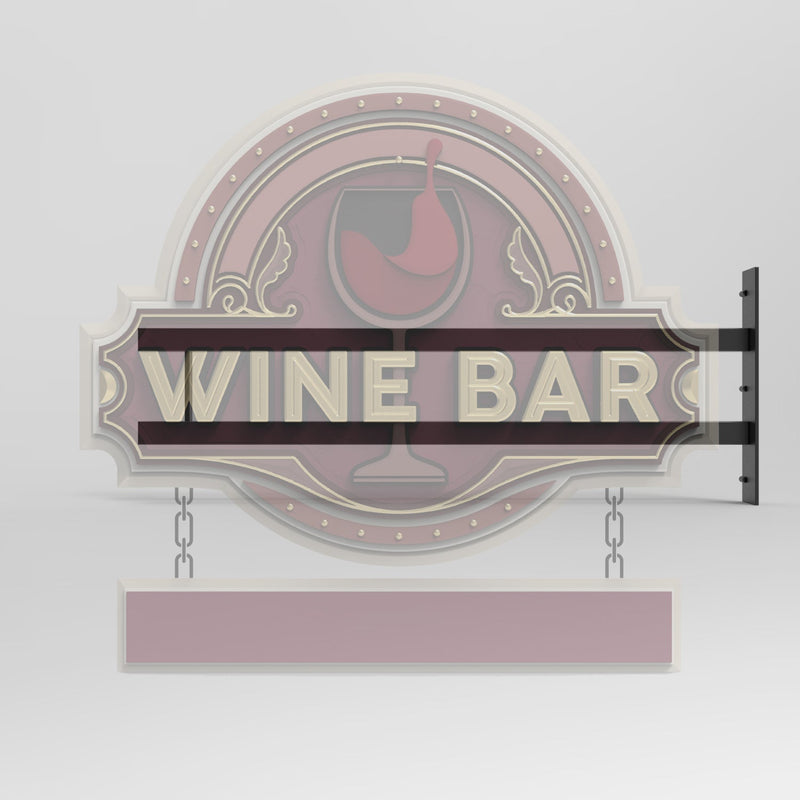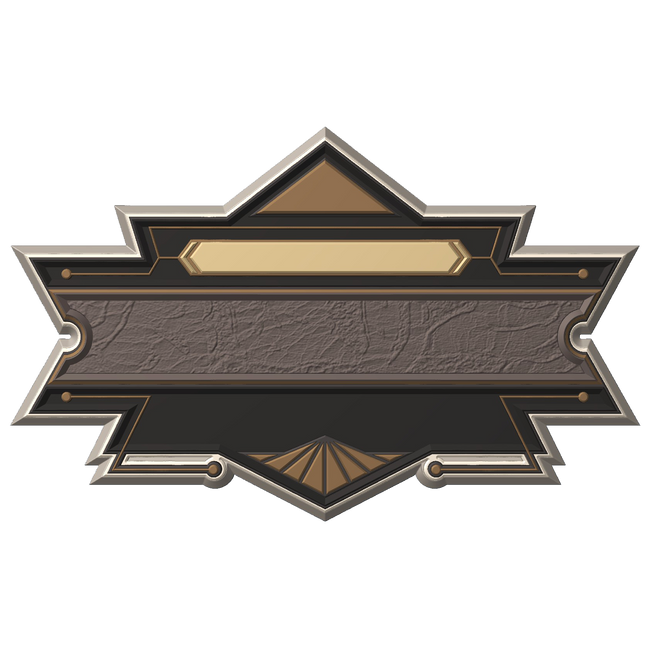Introduction
Blade signs are a classic and effective way to attract attention on busy streets, sidewalks, and shopping areas. Mounted perpendicular to a building’s façade, these signs extend outward, catching the eye of both passing pedestrians and approaching drivers. But what makes a blade sign successful isn’t just its design; it’s also its height placement.
Getting the height right can determine whether your sign is noticed or missed entirely. Too high, and pedestrians walking close by may never see it. Too low, and it could block foot traffic or even violate safety codes. For businesses that rely on local footfall or drive-by visibility, understanding height regulations is not just about compliance, it’s about maximizing visibility and safety.
In this article, we’ll explore how to determine the right mounting height for your blade sign depending on whether it’s meant for pedestrians or drivers. You’ll learn about common zoning rules, optimal viewing distances, placement strategies, and the balance between visibility and aesthetics.
Blade Sign Height Rules for Pedestrians vs Drivers
1. Understanding What Blade Signs Are
Blade signs, sometimes called projecting signs or flag signs, extend outward from a building façade, typically at a 90-degree angle. This makes them highly visible from both directions along a street, unlike flat wall signs that face only one way.
They are especially useful for storefronts in areas with heavy pedestrian or vehicle traffic, where people are more likely to approach from the side rather than straight on. Blade signs can be illuminated or non-illuminated, carved or flat, and made from materials like wood, HDU (high-density urethane), or metal.
However, the effectiveness of a blade sign doesn’t rely solely on style or material; its position and height in relation to the street environment are critical factors.
2. Why Sign Height Matters
The height of a blade sign directly affects:
• Visibility: Whether people can see it from the right distance and angle
• Safety: Avoiding obstructions to pedestrians and vehicles
• Compliance: Meeting municipal sign ordinances and accessibility standards
Each city or district often sets rules that dictate the minimum clearance from the ground and the maximum allowable height above it. These regulations ensure that signs do not block sidewalks or interfere with vehicles, while still providing enough visibility for their intended audience.
For business owners, height isn’t a guess; it’s a strategic choice that depends on who you want to attract.
3. Blade Sign Height for Pedestrian Visibility
For pedestrian-oriented areas such as downtown shopping streets, plazas, or walkable retail centers, signs should be visible at eye level or slightly above it.
Recommended guidelines:
• Bottom edge height: Typically between 7 and 9 feet above the sidewalk
• Top edge height: Usually around 10 to 12 feet above the ground
• Projection distance: Often limited to 3 to 4 feet from the building façade
This height range ensures that pedestrians walking under or near the sign can see it clearly without bumping into it. It also keeps the sign aligned with the typical visual line of people moving through a pedestrian-heavy zone.
Example:
If your storefront is located along a boutique street where people stroll and window-shop, you’d want your blade sign to be mounted around 8 feet high at its bottom edge. This puts it squarely in view without obstructing the flow of foot traffic or creating hazards.

4. Blade Sign Height for Driver Visibility
For vehicle-oriented environments such as wide roads, strip malls, or areas with higher speed limits, visibility requirements change dramatically. Drivers need more time and distance to see and process signage, especially at higher speeds.
Recommended guidelines:
• Bottom edge height: Typically 12 to 15 feet above the ground
• Top edge height: Can reach 20 feet or higher depending on nearby obstructions and street design
• Projection distance: Can extend slightly more, up to 5 feet in some areas, to enhance visibility from the road
Drivers have a different line of sight compared to pedestrians; their eyes are positioned lower relative to the sign’s distance but must capture details from farther away. A higher-mounted blade sign helps maintain visibility over parked cars, awnings, or landscaping.
Example:
If your business sits along a busy commercial boulevard, placing the bottom of your blade sign around 14 feet high ensures that it clears parked vehicles and remains visible to approaching drivers without blocking other signs.
5. Balancing Visibility for Both Audiences
Many businesses cater to both pedestrians and drivers, especially those located at transitional zones between walkable streets and busy intersections. In such cases, the challenge lies in balancing both viewing angles.
Strategies to consider:
• Use two blade signs at different heights: a lower one for pedestrians, and a higher one for driver visibility
• Combine blade and fascia signage: keep the blade at pedestrian height while adding a fascia or wall sign higher up for passing traffic
• Ensure illumination for both audiences: use subtle lighting to make the sign visible day and night without creating glare
Design also matters here. A well-proportioned carved blade sign can catch attention at multiple viewing levels if it features clear typography and contrasting colors.
6. Local Regulations and Permitting
Before installing a blade sign, always check local ordinances. Cities often have detailed rules about placement, projection, size, height, and materials.
For example:
• Minimum clearance: Most cities require at least 8 feet of clearance over sidewalks
• Maximum height: May range from 12 to 20 feet depending on zoning type
• Historic districts: These often have additional rules to maintain visual harmony
• Illuminated signs: Some areas restrict brightness or lighting type
Failing to follow these guidelines can result in fines or forced removal. Your sign fabricator or installer should be familiar with these standards, but it’s always best to confirm directly with your local planning or zoning department.
7. Design Considerations for Height and Readability
Height affects not just visibility but legibility. As a sign gets higher, the text and logo must be scaled appropriately.
Key design tips:
• Font size: Increase letter height by 1 inch for every 25 feet of viewing distance
• Contrast: Use light text on dark backgrounds or vice versa for maximum readability
• Simplicity: Avoid too many words; blade signs should be instantly recognizable
• Proportion: The sign should feel balanced against the building’s architecture
If your sign is targeting drivers, larger fonts and simpler designs work best. Pedestrian-focused signs can include finer details, such as carved textures, since viewers are closer.
8. Safety and Maintenance Implications
Mounting height also affects maintenance access and safety. A sign placed too low may obstruct movement or get damaged easily. One placed too high can be more difficult to reach for cleaning or repairs.
• Pedestrian areas: Ensure brackets are secure and the sign doesn’t swing into walkways
• Driver areas: Confirm mounting poles and hardware are wind-rated and comply with load requirements
Regular inspections are crucial, especially for wood or metal carved signs exposed to varying weather conditions.
Frequently Asked Questions
Q1: What is the standard height for blade signs above a sidewalk?
Most cities require a minimum of 8 feet of clearance from the ground to the bottom of the sign to ensure pedestrian safety. Many businesses choose between 8 and 10 feet for optimal visibility.
Q2: Can a blade sign serve both drivers and pedestrians effectively?
Yes, but placement must be strategic. Combining a low-mounted pedestrian sign with a higher fascia or projecting sign helps capture both audiences without cluttering your façade.
Q3: Do I need a permit to install a blade sign?
In most areas, yes. Permits ensure that the sign complies with local height, projection, and safety regulations. Always consult your local zoning department before installation.
Q4: What happens if my blade sign is mounted too low?
A low sign may violate clearance laws and pose hazards to pedestrians. It could also reduce visibility for people approaching from a distance, especially in busy areas.
Q5: How do I calculate the right letter size for my blade sign height?
A general rule: for every 25 feet of viewing distance, your letters should be at least 1 inch tall. For example, if the average viewer sees your sign from 100 feet away, use 4-inch-tall letters or larger.
Q6: Can a carved blade sign be illuminated safely?
Yes. Many carved signs can include LED edge lighting or downlighting, provided it meets electrical codes and local illumination restrictions. Proper lighting helps improve visibility for both pedestrians and drivers.
Conclusion
Blade sign height is more than a technical specification; it’s a major factor in how effectively your business communicates with the world. The right height ensures that your message reaches the right people, whether they’re walking past your storefront or driving down a busy street.
Pedestrian-focused blade signs perform best between 7 and 10 feet above the ground, while driver-oriented ones benefit from 12 to 20 feet of elevation. However, each location brings unique factors like traffic flow, sidewalk width, and architectural style.
By respecting local regulations, designing for clear legibility, and positioning your sign strategically, you’ll create a carved blade sign that’s not only compliant but also eye-catching and durable. The result: better visibility, better footfall, and a stronger presence for your business.
Getting high-quality 3D carved signs has never been this easy! We use only the highest quality material and paint finishes available for unmatched elegance and longevity. Check out Carved Signs and our outstanding sign collection. Just pick your style and customize it - we do the rest! Feel free to contact us online or call us at +1 (970)-455-8443.




